In this comprehensive post, we'll go over;
The most common house fire types and how to prevent them.
You'll also learn;
- Fire prevention tips.
- Which fire extinguishers are used for certain fire types?
- What the fire triangle is.
- Fire alarm levels (2-alarm, 3-alarm, etc.).
So if you've ever asked yourself any of these questions, you'll love this post!
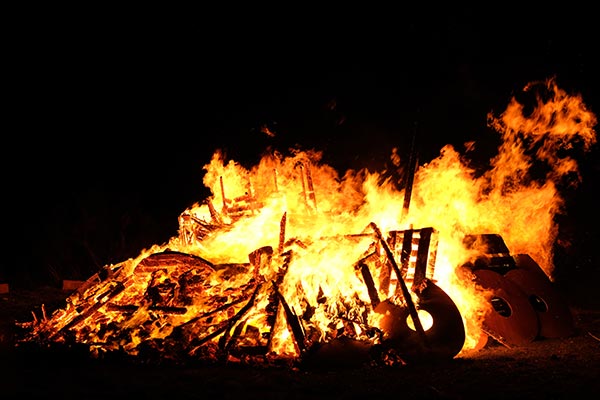
A house fire of any kind can be extremely scary. Fires are damaging in all different kinds of ways. Many people don’t realize how damaging a house fire of any kind can be. Every year, the week of October 8 is known as Fire Prevention Week.
The NFPA and firefighters across the US commemorate the Great Chicago Fire which occurred 10/8/1871. Many lives were lost and caused devastating damage. Each year, awareness and education are brought to the public to help prevent fires, create escape plans and reduce the number of casualties due to a house fire or any other type.
Many people may ask “how hot is fire?” and well, it depends. First off, did you know that you can tell how hot it is by the color? The different colored flames are an indicator of the temperature of fire. But due to the way different things burn, and at what temperature, there is only a range for the temperature, and not an exact number.
Think of when you see a campfire with low flames that appear a deep dark red (almost like coals) that fire can be approximately 1112 to 1800 degrees Fahrenheit. Orange-yellow type of flames, like that of a candle or a campfire can come close to 2000 degrees Fahrenheit. The white flame is even hotter coming in with a range of 2400 – 2700 degrees. The blue flame is the hottest flame which can be seen in many types of fires (if they are extremely hot) but can be commonly seen on grills or Bunsen burners. This blue flame can get hotter than 3000 degrees.
Most Common House Fire Types
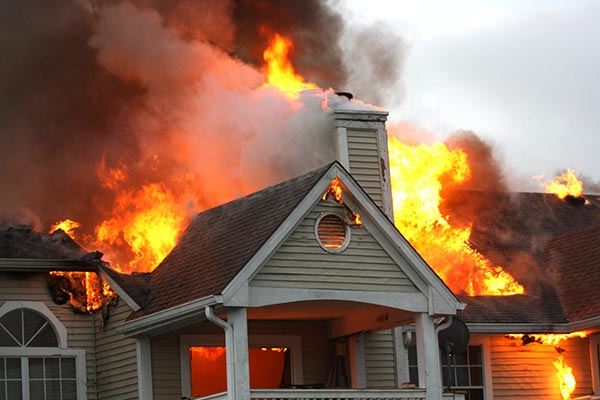
So now that we know about fire prevention week and how hot fire can get, we will check out the most common house fire types we encounter. Rock Emergency is no stranger to fires and the damage they can cause.
Being a leading fire restoration company in the Rochester, NY and surrounding areas we are prepared to start restoration immediately, no matter the cause!
Grease Fires
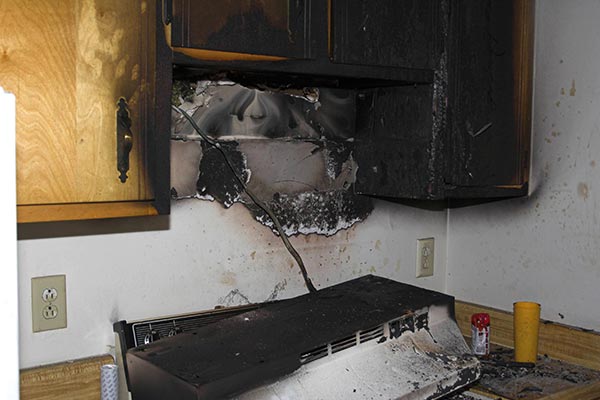
Cooking can be fun. Trying out new recipes, or new techniques are a good way to spend a Friday night.
You decided you want to try your own version of a battered fish fry. You follow the directions and pick out your oil for frying the fish, and get it heating up on the stove.
You figure you have enough time to step out of the kitchen, and you will check the oil in a minute. In that short amount of time, the oil reaches its cooking temperature, then hotter (around 450) and begins smoking.
You smell it first. It is an awful old grease smell, so you hurry back to the kitchen to see the oil smoking on the stove.
In the blink of an eye, the grease catches fire. Now you are wondering how to put out a grease fire.
In just a matter of minutes a fire started due to not watching the stove. This can happen with other food in the oven, splattering or boiled over liquids, kitchen items too close to the burner…it can all catch on fire.
When dealing with a kitchen fire, turning off the heat source and removing from the heat will be step 1 and 2. With a grease fire, it is best to smother the flames.
Using a lid to the pan can help, as well as a lot of baking soda. If you have a chemical fire extinguisher, you can use that.
For the other house fire types, you can use a regular fire extinguisher. But most importantly, stay in the kitchen when cooking and don’t leave food unattended.
Electrical Fires
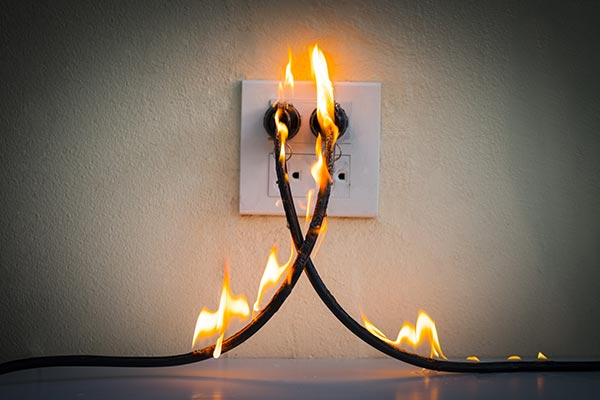
The most common causes of an electrical fire are faulty wiring. This can be within the walls and unseen, or the cords on appliances.
Overloaded outlets can also be a culprit. If you live in an older home or apartment, there may not be may outlets, so you use power strips or extension cords.
Having too many things plugged in at the same time can cause too much power and lead to a short or worse, a burnout causing a fire. There are other instances when appliances will burn out and can potentially cause an electrical fire.
This type of house fire does have a distinct smell; usually burning plastic or Styrofoam. In the event you smell something melting in a certain area (like a kitchen or bedroom) it would be best to shut off the power from a breaker.
This can prevent a possible fire from starting. If a fire has already started, you can use baking soda to try and smother the fire, or another type of dry fire extinguisher.
Best way to prevent an electrical fire is to not overload outlets or circuits, keep an eye out for frayed wiring or cords, and be aware of possible shorts in appliances.
Flammable Liquids
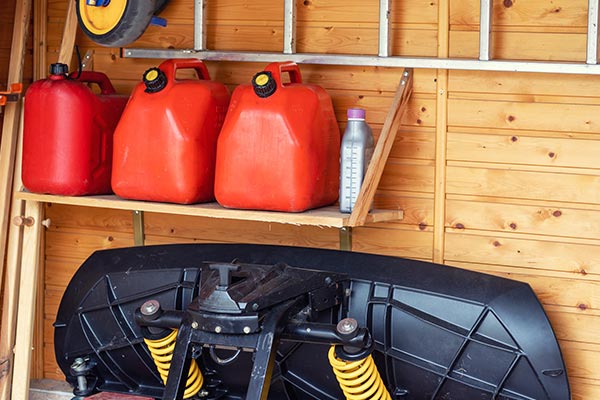
Most households will have at least one kind of flammable liquid. Most common are cleaning products like bleach, and alcohol-based products.
Others can include nail polish and nail polish remover, oil, gasoline, and aerosol products. The best way to prevent a fire from any of these flammable products is to keep them away from an open flame and any heat source.
Most often, these are kept in cabinets or in cool, dark spaces. For best way to store, read the labels on each product.
The best way to put out a fire caused by flammable liquids is by using a foam or powder fire extinguisher. Using a water-based extinguisher can cause the liquid to splash therefore spreading the fire.
Christmas Trees
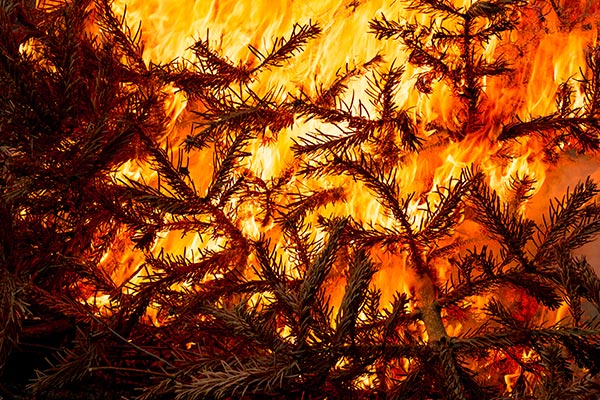
Christmas trees are a common house fire call during the holidays. These types of fires occur when the tree is too close to a heat source such as a fireplace, space heater or heating vent.
They can also occur when the tree has not been watered and becomes dry. The heat caused by lights plugged in and a possible short in the bulb or wires could spark and ignite the tree in seconds.
During the holiday months, make sure to keep your real tree watered and away from any heat sources. Check your lights before putting them on the tree to make sure the wiring is intact, and all bulbs are secure.
Additionally, unplug the tree when going to bed and when you are not home. Most Christmas tree fires happen at night when families are asleep.
When this happens, it is almost too late to put the fire out yourself and requires the fire department.
Candles
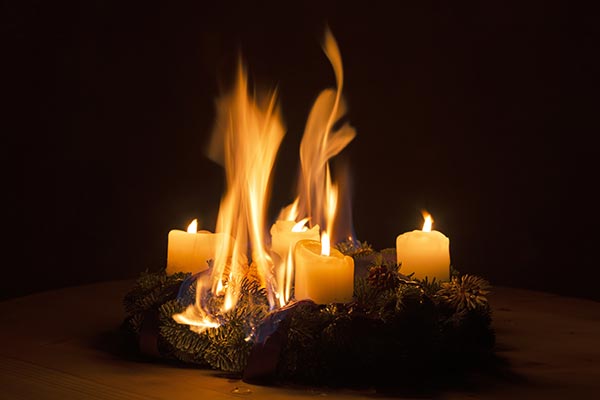
A candle fire can be extremely damaging. When candles are left unattended, the flames can get out of control.
Depending on the type of candle, the wicks may not burn evenly or may be extra-long. It is important to keep the wicks trimmed so flames don’t get too high.
When putting a candle out, it is best to use a candle snuffer which will completely put out the flame. If you don’t have one of these, you can use the lid of the candle or a glass plate.
This will smother the flame and not allow any oxygen in. If a candle fire has occurred, and is small enough, you can use a chemical type fire extinguisher to put out the fire.
Using a water type will cause the wax to spread and allow the fire to spread. If you don’t have a chemical fire extinguisher, baking soda, sand or flour can also work.
Children

Kids can be accident prone, and very curious. A house fire can easily happen due to a curious child playing with the stove, lighter or matches.
Not only is the child at risk of hurting themselves, but they could potentially cause devastating damage to your home. It is crucial to keep anything that could start a fire out of reach of children.
It is best to instruct a child when they are young that the stove is not a toy and is hot, so they don’t touch it. If a fire has been started, depending on the type of fire, and where it is would depend on how you should put it out.
If you are unsure, call the fire department.
Smoking
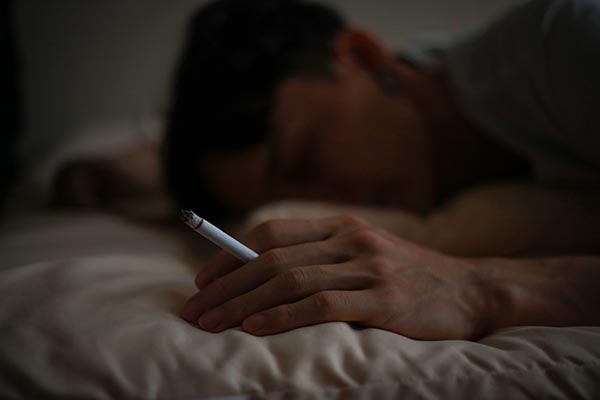
A house fire caused by smoking is among the most common reasons fire departments are called in for assistance. This usually happens when someone is smoking in bed and falls asleep.
The cigarette could fall out of the hand or ashtray and catch fire to the bedding, nearby items and carpet. Another common way smoking can cause a fire is a build-up of cigarette butts in an ashtray.
Filters can easily catch fire. A fire like this will smell horrible and cause a lot of damage. Always be sure your cigarette is completely out before leaving it.
You can use a can or jar of water to ensure it is out. If you can catch a cigarette fire before it gets out of hand, you can put it out with a regular fire extinguisher.
Space Heaters
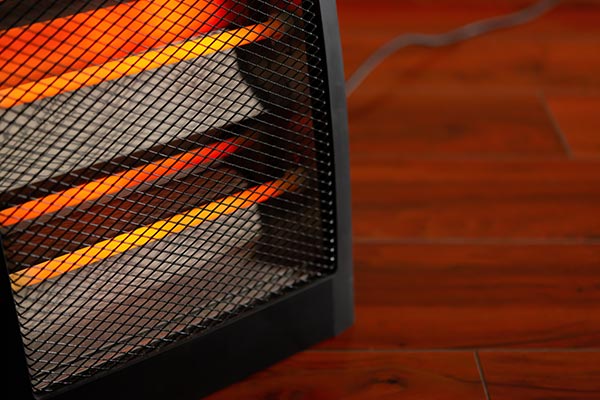
In colder months, many people will break out a space heater. It is important to follow all precautions and to be sure nothing gets too close to the heater to allow a fire to start.
Some space heaters can be small and easily used under a desk or near an individual. If heaters get too close to fabrics or paper, it can easily spark and cause a fire.
When going out to purchase a new space heater, it would be best to find one that has a thermostat which will allow it to shut off when set temperature has been reached.
There are some that have additional safety features that will make it shut off if knocked or tipped over. In the event a fire occurs when using a space heater, you should use a chemical type fire extinguisher to smother the flame.
Outdoor Fires

While an outdoor fire isn’t necessarily a house fire, it is still your property or home. An outdoor fire can include a grill, bonfire, burn pile or trash fire.
When it is nice out, we as people enjoy grilling and having fires in the backyard. If a fire is not properly contained, it can easily spread or get too big.
During summer months, bonfires are popular at parties. It can be fun to throw in that old sofa or 20 wood pallets.
Fires like this can get out of hand in seconds. Flames can reach high trees or spread to a house, shed or barn.
Best practice when having a bonfire is to keep a 5-gallon bucket of water handy. If you don’t think that could put out your fire, then it is too big.
When cooking on the grill, be aware of the grease! It can cause flames to jump out of the cover. Be sure the grill is far enough away from your home or other items.
Depending on where you live, it may be required to have a chiminea or fire pit with a lid if you have any type of fire. Some areas do not permit open fires such as a trash pit or burn pile.
Outdoor fires can be tricky, so pay attention and never leave a fire unattended outside. A sudden wind change can make a world of difference.
Fire Extinguisher Classes, Types, and When to Use Them
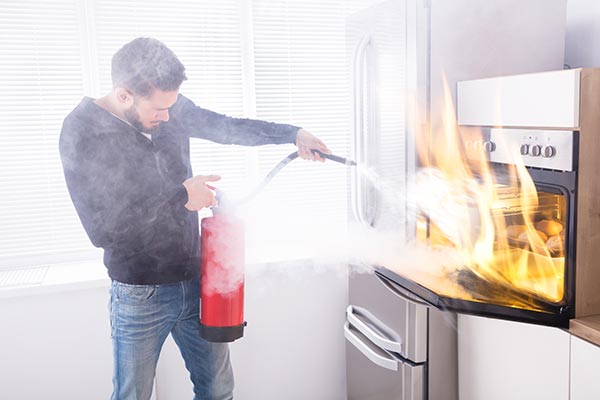
As described above, there are different types of fire extinguishers that are best used in different fire situations. Few people realize that not all fire extinguishers are the same.
Here are the different classes of fire extinguishers, when to use them and the different types!
Class A – this type is used to put out fires caused by wood or paper. This would be beneficial if having a regular fire outside, or if you have a fireplace or wood burning stove.
Class B – used when other liquids are involved such as gas, grease or flammable household products. Would be useful in a garage or basement and in household kitchens.
Class C – to be used ONLY on electrical fires. Once the electrical source has been removed, it will no longer be a class c fire and another type of extinguisher should be used (Class A or B)
Class D – to be used on metals that are flammable such as titanium and magnesium. Would be beneficial in a garage or other areas where different metals are used.
Class K – Used specifically for cooking fires caused by cooking oils and grease. These are commonly found in the food service industries and can be small extinguishers installed over cooking areas like grills, stoves and fryers.
There are 6 main types of fire extinguishers. Each one can be used with a certain class of fire.
Note that not all types of extinguishers can be used on all classes of fire.
The ABC Powder Extinguisher – this type of extinguisher can be used on Class A, B, and C fires. It uses a chemical powder that acts to smother and cover the fire preventing spread and re-ignition. Some companies have created a fireball that can be thrown into a larger fire that once it reaches the heat it bursts causing the powder to suffocate the fire.
Carbon Dioxide Extinguisher – Uses CO2 to put out the fire. By removing oxygen, the fire will suffocate and go out. This type of extinguisher is clean and safe to use mainly with a Class B fire.
Wet Chemical Extinguisher – Sprays a cooling mist onto the fire bringing down the temperature of the liquid then forms a barrier to prevent reignition. Used for Class K fires.
Water Mist Extinguisher – Uses a mist like fog that covers and reduces the amount of oxygen the fire has access too. The mist also acts as a cooling agent and reduces the temperature of the heat source. The mist has ben de-ionized which means there are no minerals in the water which allows it to be used on all classes of fire.
Foam Fire Extinguisher – This is a spray foam that covers the fire acting like a blanket. Can be used on Class A and some Class B fires. Will not work on fires caused by gasses.
Clean Agent Extinguisher – Stored as a liquid and when sprayed turns into a gas. The gas reduces the oxygen suffocating the fire. This type of extinguisher is eco-friendly and can be used around people and electronics. Can be used on Class B and C fires.
What Is the Fire Triangle?
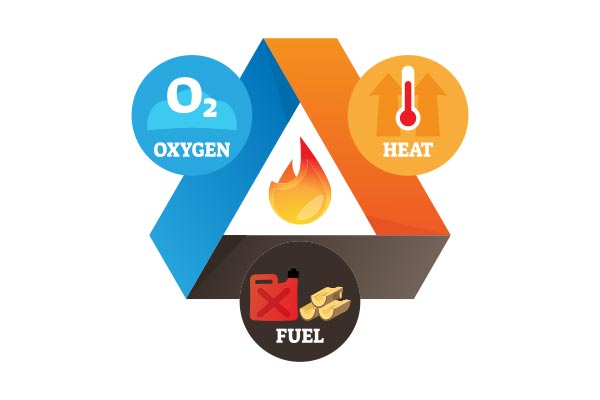
Back in school, probably during science class you learned what fire was. But now, as you get older, you are still asking yourself what is fire made of?
Fire is made up of 3 different things: fuel, oxygen, and heat. These three elements together create a chemical reaction known as combustion which then creates fire.
We may or may not have learned about the fire triangle too. But this shows the relation of each substance and how it works together to make fire.
I remember thinking that fire was just whatever was burning. But that is the fuel source. So, for example, a campfire…the fuel for the fire is going to be wood.
The heat will be coming from a lighter, or a match, something to ignite the wood. And then, oxygen. Oxygen feeds the fire and if there is oxygen, the fire will thrive.
That’s why when you smother a fire, you are removing the oxygen and it goes out.
Types of Fire
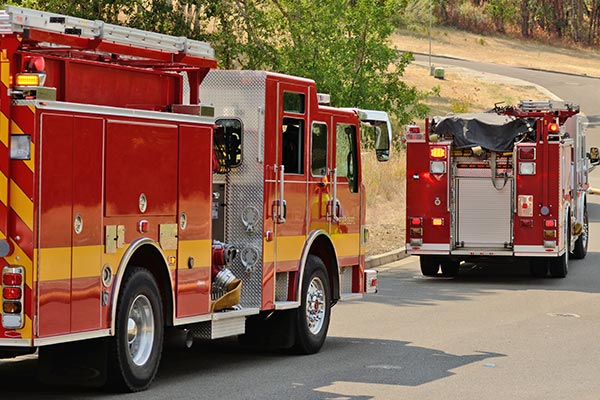
We’ve all heard the term “2-alarm fire” before at some point. Do you really know what it means?
Basically, the number indicates how many fire departments or units are being called to a fire. For example, a 1-alarm fire is generally small enough for the local fire department to manage, and there is no need for backup.
A 2-alarm fire will have the local department, and then another will come and assist. This might mean another truck, or just more firefighters.
This is the same for a 3 and 4 alarm fire as well. Depending on the city, the codes may be different regarding how many trucks and how many firefighters are in each unit.
The highest most fire departments go is a 5-alarm fire. These are the worst kind of fires and require all the trucks and all the fire personnel to help put it out. The number only going to 5 is in hopes that it does not go beyond that need for 5 departments.
Fires may last a long time, but as it starts to get extinguished, the fire may be reduced to a 3 or 2 alarm fire meaning other departments are no longer needed.
In the event you have had any type of devastation caused by a fire, Rock Emergency is here for you when you need us. Whether it be for your home or your business, near or far, we are ready to provide full fire restoration services for you!
We are IICRC certified, and HAZWOPER trained. We follow all OSHA guidelines and can guarantee quality services!
If you or someone you know has recently had a House Fire, call our Rock Emergency professionals at (585) 413-1566. Or click the button below to send us a message!
Share this Post
